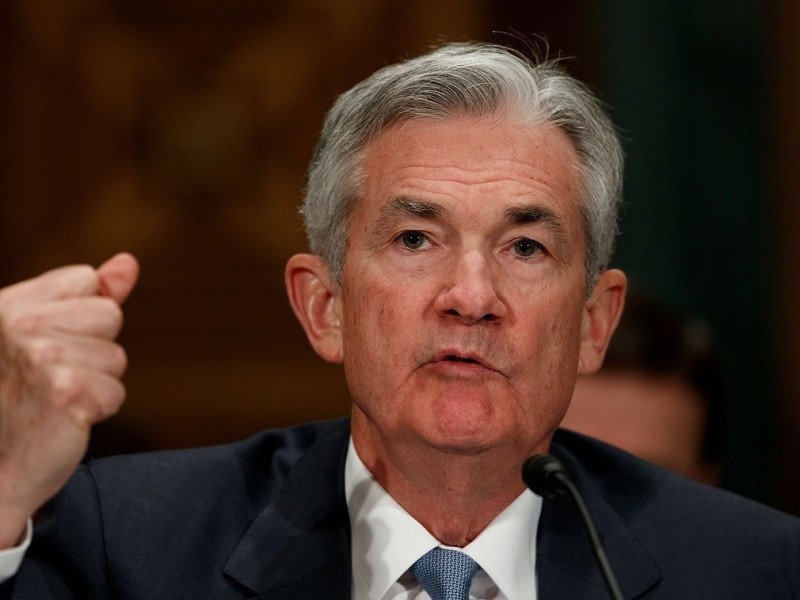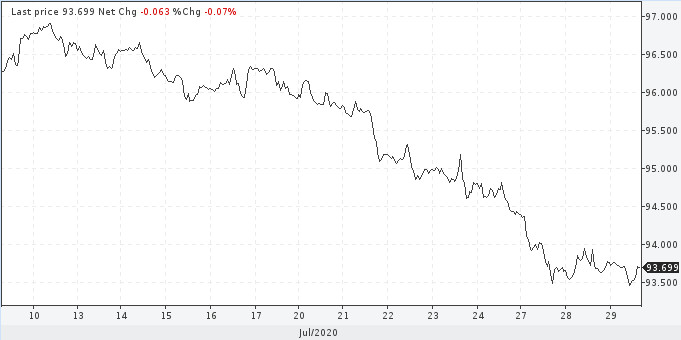
The US has made several attempts to contain the increase in the number of coronavirus cases, but all in vain. Four States in the South and West reported record daily deaths on Tuesday. Overall, the infection rate remained fairly high in the country. Markets are gradually losing hope for a rapid economic recovery. Recent macroeconomic data confirmed investors' fears. On Tuesday, the CB consumer confidence index for July was published in the US. The index declined in July to 92.6 points from 98.3 points. However, the data turned out to be worse than analysts had expected. Note that before the pandemic, the indicator was around 120-130 points.
Today, results of the US Fed's meeting and Jerome Powell's press conference are the main events. Market participants do not expect any changes in the monetary policy. They are more interested in the rhetoric of the regulator. In light of recent events, it may turn out to be "pigeon". The Fed has already extended most of its anti-crisis programs for three months. Now, markets are interested in what else the Fed is ready to do if the economic recovery needs more time. It is possible that the regulator will start controlling the yield curve in the United States until the end of this year.
How will the US dollar react to today's statements? This is an interesting question. Sellers of the US dollar are likely to welcome hints about further monetary policy easing. It is quite possible that the Fed may stand up for the national currency. Jerome Powell will try to convince markets of the firmness of its course. This, along with overheated sell positions on the US dollar, may turn into a pullback from the current lows. This scenario will allow the Treasury to gain time for new rounds of borrowing in the debt markets.
At the same time, the greenback will hardly return to relatively recent highs in the near future. During the mentioned period, it was trading 100 pips above the basket of major currencies. This can happen only if the March disaster repeats.
In general, the US dollar will hardly show a rapid recovery.
Before the meeting, the US dollar index continued its downward trend and located near its 2-year lows.
USDX

Today, market participants will be waiting for hints dropped by the Fed. They believe that the regulator will show its willingness to increase its purchases of debt with a longer maturity. The financial authorities can set limits of profitability or discuss a higher level of inflation. As noted in Goldman Sachs, a shift towards "average inflation targeting" together with the very high level of the US government debt raises concerns about the US dollar's ability to remain a reserve currency.
Here, you should pay attention to the jump in gold, which is trading near its record high of $1,980.5 per ounce that was set on Tuesday.
Some economists believe that the US dollar should have collapsed long ago. Since March, the Fed has printed an unprecedented amount of money to cope with the recession.
The Fed's balance advanced faster than that of other central banks, as banks and corporations felt a lack of the US dollar liquidity amid the quarantine. Recently, this indicator has somewhat decreased.
The US dollar is also under pressure exerting by uncertainties about an additional aid package. Some Republicans did not support a $1 trillion stimulus proposal. At the same time, representatives of the Democratic party called for more significant support, including unemployment benefits of $600 a week.
The problem is that the current fiscal support ends this week. To avoid the economic slump, it is necessary to continue stimulus program and even increase it. Lawmakers cannot come to an agreement. As long as there are risks of the US economic weakness, the US dollar sell-off will continue.
 English
English 
 Русский
Русский Bahasa Indonesia
Bahasa Indonesia Bahasa Malay
Bahasa Malay ไทย
ไทย Español
Español Deutsch
Deutsch Български
Български Français
Français Tiếng Việt
Tiếng Việt 中文
中文 বাংলা
বাংলা हिन्दी
हिन्दी Čeština
Čeština Українська
Українська Română
Română

